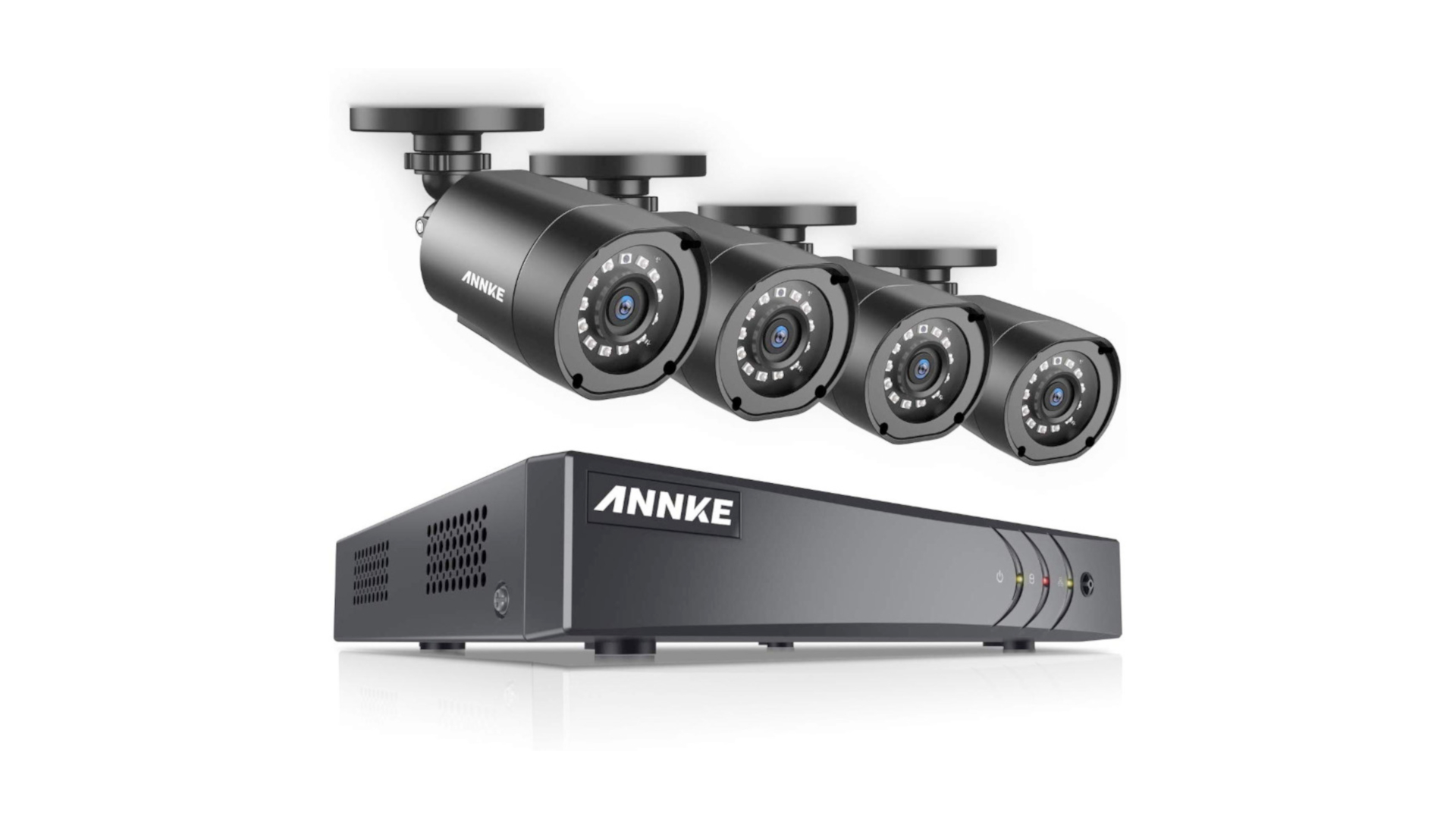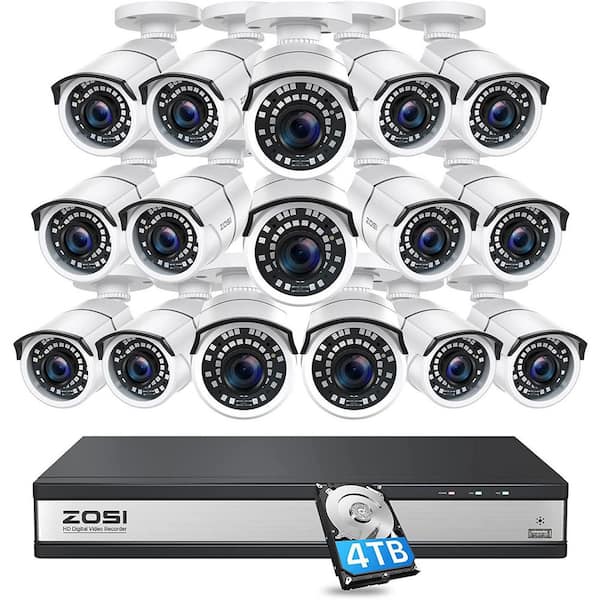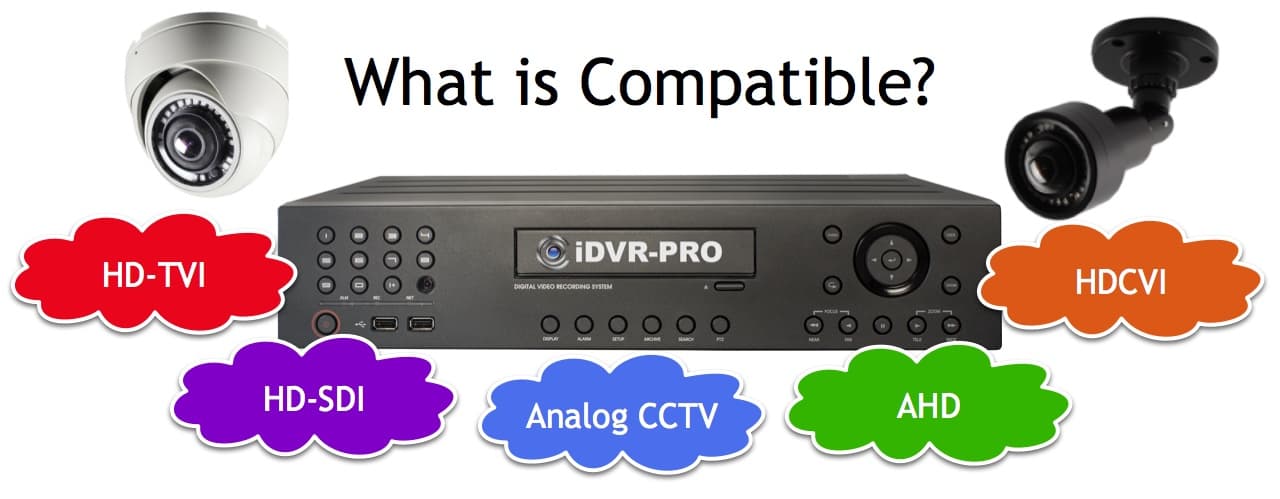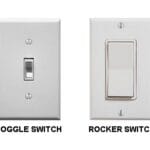You cannot use any DVR with all security cameras. Compatibility depends on the system and technology type.
Understanding the compatibility between DVRs (Digital Video Recorders) and security cameras is crucial for setting up an effective surveillance system. Security systems vary widely, incorporating different technologies like analog, HD over coax, and IP-based systems. Each DVR is designed to work with specific types of cameras, making it essential to match the DVR with the camera technology you have or plan to install.
This ensures the quality of the video feed and the overall reliability of your security setup. Selecting the right DVR involves knowing the type of cameras you have, the desired video quality, and the system’s scalability. With the right combination, you can maximize your security system’s efficiency and effectiveness, keeping your property safe.
Compatibility Between Dvrs And Security Cameras
Choosing the right DVR for your security cameras is crucial. The DVR must match the camera’s technology. This ensures reliable recording and playback. This section explores the DVR compatibility with various security cameras.
Factors Influencing Dvr Compatibility
- Resolution Support: DVRs must support the camera’s resolution.
- Connection Types: Check for matching input ports.
- Signal Type: Analog, HD analog, and IP signals differ.
- Software: Ensure software compatibility for features.
- Brand Specific Features: Some features work with certain brands only.
Types Of Security Cameras And Corresponding Dvrs
| Camera Type | DVR Type |
|---|---|
| Analog Cameras | Standard DVRs |
| HD Analog Cameras | HD DVRs |
| IP Cameras | NVRs |
Different cameras require specific DVRs. Analog cameras pair with standard DVRs. High-definition analog cameras need HD DVRs. IP cameras work with network video recorders (NVRs).

Credit: www.techradar.com
Analog Vs Digital: Understanding Dvr Connections
Choosing the right DVR for security cameras is crucial. Know the difference between analog and digital systems for a smart choice.
Analog Camera Systems And Dvrs
Analog cameras connect to DVRs using coaxial cables. These systems capture video in a traditional format. Quality is consistent but may lack high-definition clarity.
Analog systems are cost-effective. They are easy to install and use. See below for key points:
- Coaxial Cable: Transmits video to DVR
- Lower Resolution: Compared to digital
- Simple Setup: Plug and play
Digital/ip Cameras And Network Video Recorders
Digital cameras, also known as IP cameras, use network connections. They record in high-definition. Clarity and detail are significantly better.
Network Video Recorders (NVRs) pair with digital cameras. They offer advanced features. Below are key advantages:
- High Definition: Superior video quality
- Remote Access: View from anywhere
- Scalability: Easy to expand system
The Role Of Video Transmission Standards
The Role of Video Transmission Standards is crucial in security systems. These standards ensure that DVRs and cameras can communicate. Without them, compatibility between devices becomes a challenge. Let’s explore how these protocols impact DVR use with security cameras.
Common Transmission Protocols
- Analog: Uses traditional coaxial cables for video data.
- IP Network: Sends video over a network using Internet Protocol.
- HD-CVI: Transmits high-definition video via coaxial.
- HD-TVI: Supports high-res video over long distances.
- AHD: Affordable HD video transmission through coaxial.
The Impact On Dvr Compatibility
DVR compatibility relies on matching transmission protocols. Each DVR is designed to work with specific camera types. If the protocols differ, they won’t pair successfully. Users must ensure that the DVR supports the camera’s output. Here is a breakdown of compatibility considerations:
| Protocol | DVR Compatibility |
|---|---|
| Analog | Works with most traditional DVRs |
| IP Network | Requires Network Video Recorders (NVR) |
| HD-CVI | Specific DVRs designed for HD-CVI cameras |
| HD-TVI | Compatible with certain DVRs accepting HD-TVI input |
| AHD | Needs AHD compatible DVRs |
Users must check their DVR and camera protocols before pairing. It ensures a smooth setup and reliable security monitoring.
Hybrid Dvr Systems: Bridging The Gap
Hybrid DVR Systems are the bridge in security technology. They connect old and new cameras. This makes security better and easier.
Features Of Hybrid Dvrs
- Support for Analog and IP Cameras: Hybrid DVRs work with both types. This means you can use old and new cameras together.
- Scalability: You can add more cameras as needed. This makes the system grow with your needs.
- High-Resolution Recording: These systems record clear videos. This helps in seeing details clearly.
- Remote Access: You can watch the video from anywhere. All you need is internet.
Benefits For Security Camera Integration
- Cost Savings: No need to replace old cameras. Use them with new ones and save money.
- Flexibility: Mix different types of cameras. This makes your system flexible.
- Easy Upgrade: Upgrading is simple. You can add new tech without big changes.
- Enhanced Security: Using both types of cameras makes security better. It covers more area and details.
Resolution And Quality Considerations
When setting up a security system, resolution and quality matter. These factors affect how clear your videos are. High resolution means clearer images. It’s important for recognizing faces or license plates.
Matching Camera And Dvr Resolutions
Make sure your DVR matches your cameras’ resolution. A mismatch can cause issues. If your camera records in 1080p but your DVR only supports 720p, you lose quality. Aim for a DVR that supports the highest resolution your cameras offer. This ensures crisp and detailed footage.
- 1080p Cameras: Choose a DVR that supports at least 1080p.
- 4K Cameras: Opt for a DVR that can handle 4K resolution.
The Effect On Storage And Playback
High resolution videos take up more space. They require more storage on your DVR. This means you might need to invest in larger storage or more frequent backups. Also, high resolution videos need more power to play back smoothly. Ensure your system can handle this.
| Camera Resolution | Storage Needs | Playback Requirements |
|---|---|---|
| 1080p | Medium | Standard DVR |
| 4K | High | Powerful DVR |
In summary, match your DVR with your cameras’ resolution. Consider the storage and playback power needed for high-quality videos. This ensures your security system works well.
Brand-specific Dvrs And Proprietary Technologies
When setting up a security system, brand-specific DVRs often come into play. These DVRs are designed to work seamlessly with cameras from the same brand. They use proprietary technologies. This ensures optimal performance and compatibility. But it can limit flexibility in choosing different camera brands.
The Limitations Of Brand Exclusivity
Brand-exclusive DVRs may not support cameras from other manufacturers. This is due to unique software and hardware requirements. Users are often tied to one brand for all their security components. This can lead to higher costs and fewer features. It also limits the ability to upgrade individual parts of the system.
- Higher costs due to lack of competition
- Reduced features as options are limited to one brand
- Upgrade limitations for individual system components
Workarounds For Multi-brand Setups
Even with proprietary technologies, workarounds exist for multi-brand setups. Users can look for universal or hybrid DVRs. These support various camera types and brands. Another option is to use video encoders. They convert signals from non-compatible cameras to work with the brand-specific DVR.
- Seek universal DVRs that support multiple brands
- Use video encoders to adapt camera signals
- Check for firmware updates that might increase compatibility
It’s essential to check the DVR’s specifications. Ensure it can integrate with different security camera technologies. Always consider future expansion of the system.
The Importance Of Software And Firmware
Selecting the right DVR (Digital Video Recorder) for security cameras is crucial. Software and firmware play key roles. They ensure cameras and DVRs work well together. Good software enables features and ease of use. Firmware updates keep the system secure and functional.
Dvr Software Compatibility Issues
Using any DVR with security cameras is not simple. Software must match camera requirements. Different brands may not work well together. Compatibility issues can lead to:
- Failed recordings
- Limited functionality
- Video quality problems
Always check DVR and camera specs before pairing them.
Firmware Updates And Their Role
Firmware is the permanent software programmed into a device. It controls how the DVR operates. Regular updates are important because they:
- Fix bugs
- Improve performance
- Add new features
- Enhance security
Ensure your DVR supports automatic firmware updates. This keeps your security system up-to-date.

Credit: www.homedepot.com
Installation And Configuration Tips
Setting up a DVR system enhances security camera functionality. Proper installation and configuration are crucial for optimal performance. Follow these tips for a seamless setup process.
Step-by-step Guide To Connecting Cameras To Dvr
Before connecting, ensure camera and DVR compatibility. Check the camera output and DVR input formats.
- Power off all devices before making connections.
- Connect cameras to the DVR using coaxial cables or network cables, depending on the system.
- Match connectors on both DVR and camera ends.
- Secure connections with screw-on or push-in techniques, depending on the connector type.
- Power on the DVR and access the menu for configuration.
- Assign each camera to a channel on the DVR.
- Adjust settings like resolution and frame rate for each camera.
- Test the live view and recording features to ensure proper function.
Troubleshooting Common Issues
Encounter issues? No worries. Common problems often have simple solutions.
- No signal detected? Check all cable connections.
- Experience image quality issues? Adjust the camera settings.
- If recording doesn’t work, verify the DVR’s storage capacity.
- Ensure the correct input is selected on the DVR for each camera.
- Reboot the DVR to resolve unresponsive issues.
- If problems persist, consult the manual or manufacturer support.
Future-proofing Your Surveillance System
Security systems must evolve with new tech. Choosing the right DVR is key. It ensures your system grows with your needs. Scalability and tech updates are critical. Let’s discuss how to secure your system’s future.
Investing In Scalable Dvr Solutions
Scalable DVRs adapt to changing needs. They support more cameras as you expand. Choose DVRs with ample storage and channel support. Look for features like:
- High storage capacity
- Additional camera channels
- Upgradeable firmware
- Remote access capabilities
These features ensure your DVR grows with you.
Staying Updated With Technological Advances
Surveillance tech rapidly changes. Your DVR should keep pace. Look for DVRs that:
- Support the latest camera resolutions
- Integrate with new software
- Offer cloud storage options
- Provide strong encryption
This way, your system stays secure and advanced.

Credit: videos.cctvcamerapros.com
Frequently Asked Questions
Can Any Dvr Work With My Security Cameras?
Not all DVRs are compatible with every security camera due to differing connection types and protocols. It’s essential to check compatibility.
What Features To Consider In A Dvr For Cameras?
Look for storage capacity, number of channels, resolution support, network capabilities, and compatibility with your security cameras.
Do All Dvrs Support Hd Cameras?
No, not all DVRs support HD cameras. Ensure the DVR you select can handle the resolution of your HD security cameras.
Is It Possible To Mix Cameras With Different Dvrs?
While possible, mixing cameras with different DVRs can be complex and may require additional hardware or software for compatibility.
How To Ensure Dvr Compatibility With Cameras?
To ensure DVR compatibility, match the camera’s output format and resolution with the DVR’s supported input specifications.
Conclusion
Choosing the right DVR for your security cameras is crucial for a seamless surveillance system. Compatibility, features, and storage capacity are key factors to consider. Opt for a DVR that aligns with your cameras’ technology for optimal performance and reliability.
Remember, the right match ensures maximum security and peace of mind.




